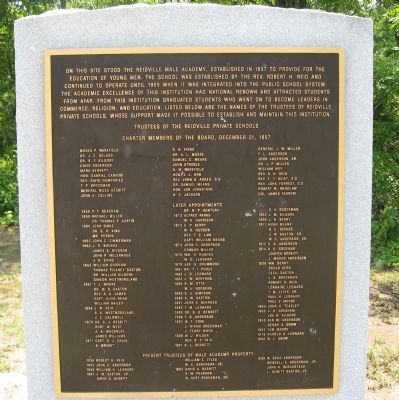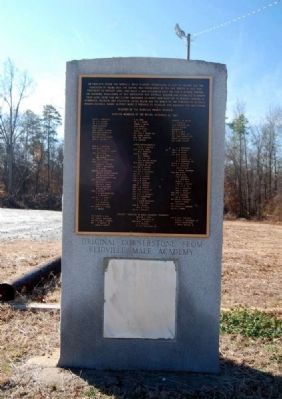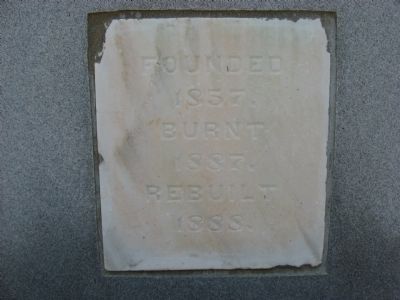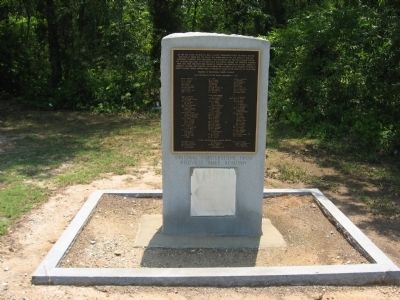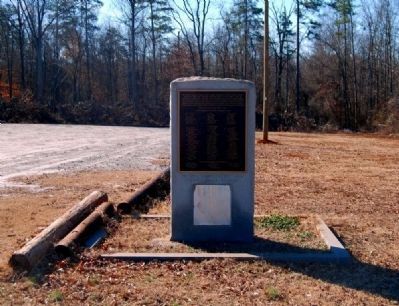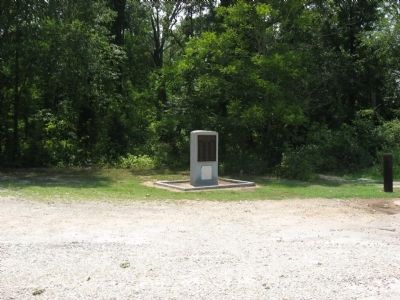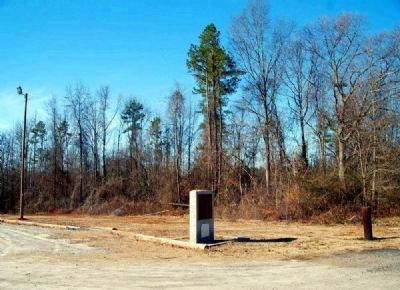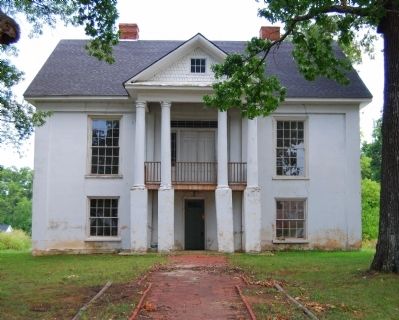Reidville in Spartanburg County, South Carolina — The American South (South Atlantic)
Reidville Male Academy
Original Cornerstone
[See Marker Photo for the names of Trustees and Charter Members]
Topics. This historical marker is listed in these topic lists: Education • Notable Buildings. A significant historical year for this entry is 1857.
Location. 34° 51.619′ N, 82° 6.458′ W. Marker is in Reidville, South Carolina, in Spartanburg County. Marker is on Main Street east of Willow Street, on the right when traveling east. There is no trace of the original structue. Touch for map. Marker is in this post office area: Reidville SC 29375, United States of America. Touch for directions.
Other nearby markers. At least 10 other markers are within 5 miles of this marker, measured as the crow flies. Reidville Public School (approx. 0.4 miles away); Birthplace (approx. 2.6 miles away); Abner Creek Baptist Church (approx. 2.6 miles away); a different marker also named Abner Creek Baptist Church (approx. 2.6 miles away); First Erosion Control Work in the Southeast (approx. 3.2 miles away); Hugh Porter & Jane Baily McClimon (approx. 4.8 miles away); McClimons Memorial (approx. 4.8 miles away); Nazareth Church (approx. 4.9 miles away); Nazareth Frame House (approx. 5 miles away); Nazareth Church Stone Marker (approx. 5.1 miles away).
More about this marker. The original cornerstone of the academy was preserved and mounted in this marker.
Also see . . .
1. The Reidville Academy Faculty House. The Reidville Academy Faculty House is significant as an excellent example of mid-nineteenth century Greek Revival residential architecture with late-nineteenth century Victorian alterations. (Submitted on August 7, 2008, by Ronald Miller of Gray Court, South Carolina.)
2. Slobot goes to Reidville, SC USA. Photo gallery of Reidville, including other historic homes and buildings. (Submitted on February 14, 2011, by Brian Scott of Anderson, South Carolina.)
Additional commentary.
1. Reidville Academy Faculty House
The Reidville Academy Faculty House, located at the corner of College and Main Streets in Reidville, Spartanburg County, was built ca. 1860 as a residence for the principal of the Reidville Male High School, later the Reidville Male Academy. It is a two-story brick Greek Revival raised cottage with late Victorian alterations.
The exterior brick walls are covered with stucco and scored to look like large blocks of stone. One unusual feature of the house is that the east, or rear, elevated has never been covered with stucco. The original roof is believed to have been a low hipped design, replaced in the late nineteenth century by the present gabled roof with wooden shakes at the same time that the front portico was probably added.
The floor plan features four rooms and a large central hall on each story, with symmetrical staircases in the first story central hall. The second story, designed as the main living area, features twelve-foot ceilings, wainscoting in the central hall, and more elaborate trim and moldings than on the first story. Several of the windows on the first story are original to the house, as is the pair of front doors, sidelights, and transom.
Significance
The Reidville Academy Faculty House is significant as an excellent example of mid-nineteenth century Greek Revival residential
architecture with late-nineteenth century Victorian alterations and also for its association with the Reidville Male Academy and Reidville Female Academy, institutions which played a major role in education in upcountry South Carolina from 1858 to 1905.
The academies, also known as the Reidville Male and Female High Schools, were founded by Rev. Robert Hardin Reid (1821-1907), a Presbyterian clergyman and educator. Reid, for whom the town of Reidville was also named, was an 1846 graduate of South Carolina College (now the University of South Carolina), studied at the Columbia Theological Seminary and was chaplain of the Barhamville Collegiate Institute near Columbia his last years in seminary. He moved to Spartanburg District in 1853 to become the minister of nearby Nazareth Presbyterian Church, a position which he held for forty years until ill health forced him to retire in 1893.
Nazareth Presbyterian Church, approximately five miles northeast of Reidville, was founded in 1772 and had long been involved in education in the South Carolina upcountry. In 1794 its members had founded the Nazareth Philanthropic Society -- later incorporated as the Spartanburg Philanthropic Society -- to promote the improvement of education both in Spartanburg District and throughout the state. Reid, in a sermon preached on New Year's Day 1857, pointed out that the young Presbyterians of the Nazareth community and western Spartanburg District were being educated elsewhere, often in schools of other denominations, and he challenged his congregation to help establish suitable local schools. By mid-1857 the effort to establish "the Reidville Male and Female High Schools" was well underway when funds were raised by subscription, trustees were selected, a building committee was appointed, and a site for the school was chosen. In August the editors of the Carolina Spartan commended, "it is truly cheering to every lover of education and refinement of whatever religious persuasion to see this spirit manifested in our district." By the end of 1857 one hundred acres had been donated for the schools by James N. Gaston, James Wakefield, and Anthony Wakefield; the cornerstone of the first building had been laid; and a charter had been granted to the trustees, with Rev. Reid as president.
The Reidville Male High School was built as one end of Main street and the Reidville Female High School was built at the other, with residential lots laid out between the schools on either side of Main Street for two blocks in each direction. The town, named Reidville, was established with limits set at a one-mile diameter from the schools. Reidville Male High School, with Rev. Thomas E. Davis of Concord, N.C., as principal, opened for classes in March 1858, and Reidville Female High School, with Rev. Reid as principal, opened for classes in February 1859.
This house was built ca. 1860 as the residence for the principal of the Reidville Male Academy. Rev. Thomas E. Davis, who did not live in the house -- he left Reidville before its completion -- was succeeded by Thomas C. Duncan, probably the first principal to occupy the house, in October 1860. Both the male and female high schools remained open during the Civil War, and Rev. Reid persuaded Federal troops not to burn the schools when they camped briefly near Reidville at the end of the war in 1865. Though the schools closed briefly during Reconstruction, they opened again in 1870, and Reidville Female High School became Reidville Female College in 1871. The academies operated under Rev. Reid's supervision as president of the Board of Trustees until 1893 and under the direction of Reid's son Rev. B.P. Reid until they were consolidated as a single high school and renamed Reidville High School in 1905. (Source: National Register Nomination Form.)
— Submitted February 14, 2011, by Brian Scott of Anderson, South Carolina.
Additional keywords. Private, School
Credits. This page was last revised on November 27, 2020. It was originally submitted on August 7, 2008, by Ronald Miller of Gray Court, South Carolina. This page has been viewed 1,211 times since then and 30 times this year. Photos: 1. submitted on August 7, 2008, by Ronald Miller of Gray Court, South Carolina. 2. submitted on February 14, 2011, by Brian Scott of Anderson, South Carolina. 3, 4. submitted on August 7, 2008, by Ronald Miller of Gray Court, South Carolina. 5. submitted on February 14, 2011, by Brian Scott of Anderson, South Carolina. 6. submitted on August 7, 2008, by Ronald Miller of Gray Court, South Carolina. 7. submitted on February 14, 2011, by Brian Scott of Anderson, South Carolina. 8. submitted on September 17, 2008, by Brian Scott of Anderson, South Carolina. • Kevin W. was the editor who published this page.
